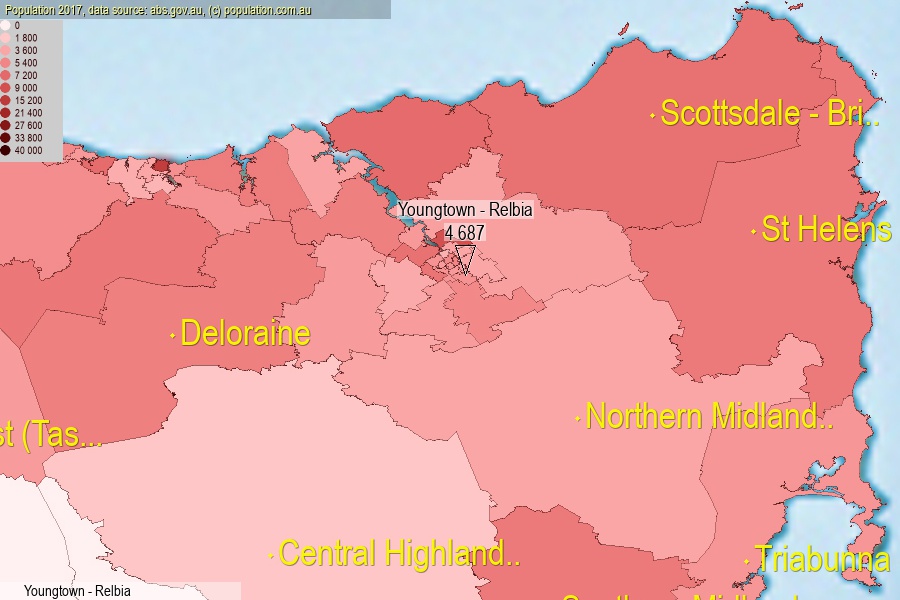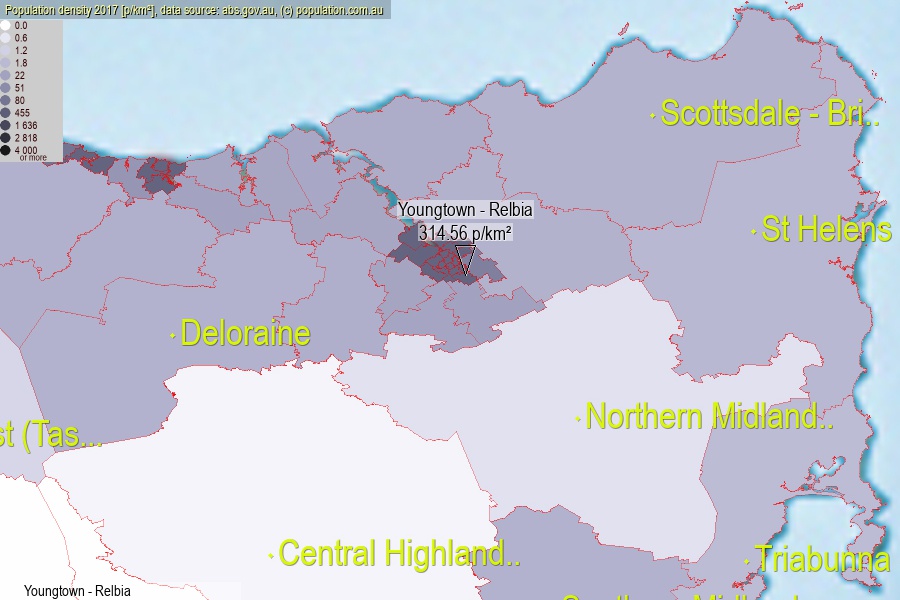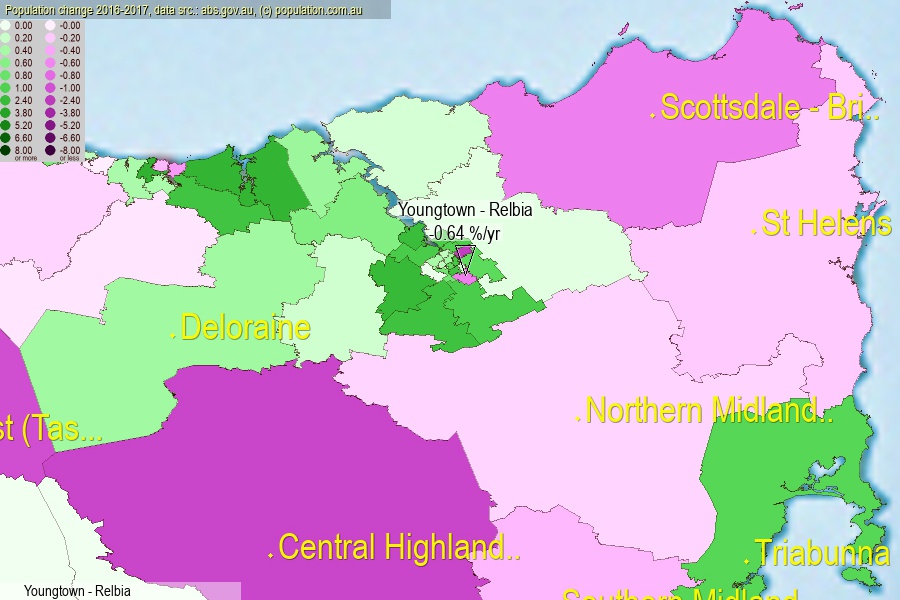 population.com.au
population.com.auLast official estimated population of Youngtown - Relbia (as Statistical Area Level 2) was 4 687 people (on 2017-06-30)[2]. This was 0.02% of total Australian population and 0.89% of TAS population. Area of Youngtown - Relbia is 14.90 km², in this year population density was 314.56 p/km² . If population growth rate would be same as in period 2016-2017 (-0.64%/yr), Youngtown - Relbia population in 2025 would be 4 454. [0]



Click to enlarge. Youngtown - Relbia is located in the center of the images.
Population [people], population density [p./km²] and population change [%/year] [2]
View borders » (new window) [4]
[1991-1992] +2.59 %/Yr.
[1992-1993] +2.01 %/Yr.
[1993-1994] +2.27 %/Yr.
[1994-1995] +2.04 %/Yr.
[1995-1996] +2.34 %/Yr.
[1996-1997] +0.83 %/Yr.
[1997-1998] +0.27 %/Yr.
[1998-1999] +1.12 %/Yr.
[1999-2000] +1.21 %/Yr.
[2000-2001] +1.12 %/Yr.
[2001-2002] +5.77 %/Yr.
[2002-2003] +3.41 %/Yr.
[2003-2004] +2.99 %/Yr.
[2004-2005] +4.14 %/Yr.
[2005-2006] +2.65 %/Yr.
[2006-2007] +1.40 %/Yr.
[2007-2008] +1.44 %/Yr.
[2008-2009] +2.78 %/Yr.
[2009-2010] +0.95 %/Yr.
[2010-2011] +0.23 %/Yr.
[2011-2012] -0.78 %/Yr.
[2012-2013] -1.09 %/Yr.
[2013-2014] -0.54 %/Yr.
[2014-2015] -0.94 %/Yr.
[2015-2016] -0.27 %/Yr.
[2016-2017] -0.64 %/Yr.
[0] Calculated with linear interpolation from officially estimated population
[1] Read more about SA2 and Australian Statistical Geography Standard (ASGS) on abs.gov.au
[2] Population data from Australian Bureau of Statistics (Population and density: 2017; change: 2016-2017)
[3] Digital Boundaries: Australian Statistical Geography Standard (ASGS) 2016.
[4] Border coordinates are simplifyed using Ramer-Douglas-Peucker algorithm.